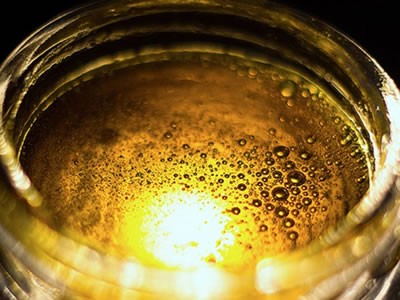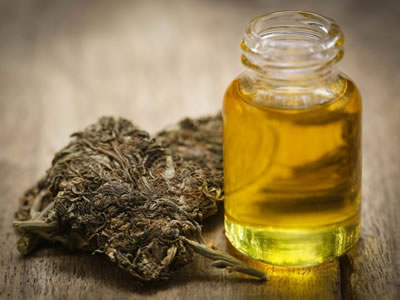A Comprehensive Guide to Honey Oil
So, if you’re looking to try something new, you need to consider concentrates. Compared to smoking with pipes or bongs, concentrates like wax or honey oil can have between 10% and 50% more THC (tetrahydrocannabinol).
Naturally, this means much higher hits.
But where should you begin? Unlike when they first hit the market a decade ago, there are endless combinations, options and variations to choose from.
So where does honey oil come in?
Originally, honey oil was just the in-between stage for other concentrates. Recently however, we’ve seen more and more what honey oil can do in its own right, as well as its role in making shatter and wax.
What is Honey Oil?
 You may know honey oil by the names hash oil and cannabis oil, which is funny because it doesn’t really look like an oil.
You may know honey oil by the names hash oil and cannabis oil, which is funny because it doesn’t really look like an oil.
In fact, its appearance actually looks more like, well, honey. This is due to its thick, extremely sticky and almost syrupy texture. It’s made through a method called solvent extraction, which sounds a lot more complicated than it really is.
The process is actually quite simple.
The marijuana plant is “stripped” of its trichomes with some kind of solvent – this can be alcohol (usually ethanol), chloroform, carbon dioxide or more commonly, butane. When butane is used, its commonly referred to as BHO, or Butane Honey Oil.
The benefit to this method is a much higher potency than smoking can provide. Both in terms of THC levels, but also in flavour and aroma, depending on how its used.
Speaking of the ways its used – let’s get into it…
How can you use Honey Oil?
Honey oil is an incredibly versatile concentrate. The syrup quality it has means it can be ingested in immeasurable ways, with more methods constantly coming to light. To name a few ways honey oil can be used: it can be put into edibles; dabbed with a dab rig; added to concentrate cartridges or syringes; and many more.
If you decide to make your own honey oil, then refilling your own cartridges can be a great help to your bank account.
Honey oil can also be used to make shatter and wax, as they’re really just cooled forms of honey oil. These themselves can then be dabbed with a dab rig.
So, there’s a lot of options out there.
Can I make Honey Oil at home?
 Though most of the methods for creating honey oil are perfectly safe, absolutely do not try to use butane as the solvent at home. Butane is a highly dangerous and even explosive substance and should only be handed by qualified professionals.
Though most of the methods for creating honey oil are perfectly safe, absolutely do not try to use butane as the solvent at home. Butane is a highly dangerous and even explosive substance and should only be handed by qualified professionals.
There is also a non-solvent method to making honey oil. This involves ice water extraction and is known as winterization.
As the name suggests, you add marijuana bud or material to ice cold water, usually in alternately layers of ice cubes and plant, and then leave it to chill for about 10 minutes. With some mixing and pressure, you can separate the resin glands from the rest of the leaf material. This can also be consumed on its own as a tincture, or filtered.
Once filtered, you’re left with the honey oil!
Though fairly time consuming, this will create a completely pure product. No chemical residue or contaminants.
If you’re looking at making it at home, you may want to consider researching a more elaborate guide, but that’s the basic gist of how it’s done.
Of course, the easiest way to get honey oil is from your local dispensary. Many will offer a variety of creation options as well, with BHO, honey oil made from alcohol and many others.
So, even if you don’t plan on making it yourself, knowing how it’s made can help inform your honey oil purchases.
Honey Oil vs Other Concentrates
Since being introduced over 15 years ago, the types of concentrates available has just continued to explode. There’s shatter, wax, budder, crumbles, pull-and-snap, crystalline, resins and of course oils like honey oil.
But how do you tell them apart? Is one better than the others?
There are some considerable differences between them. Let’s break just some of them down here:
- Shatter has an almost strange, glasslike texture to it. It’s named for how breakable it is. You could find yourself snapping it by accident! They can range in colour from translucent to amber/gold shades.
- Wax, perhaps unsurprisingly, resembles melted candle wax, though with a bit of a grainy consistency. Compared to shatter, wax is far less stable and will need to be used much sooner. However, it can be used in more creative ways than shatter as it’s less rigid.
- Crumble has a dry, almost-brown sugar like texture to it. It can be difficult to work with for beginners – easily lodged underneath fingernails and staining surfaces – but is just as potent as other concentrates, averaging 60%+ THC.
- Resins are made through a fairly complex process of continually freezing buds and then extracting it. The rigorous process is richly rewarding however, offering low contaminate and flavourful hits.
- Oils are perhaps the most versatile form of concentrate, being used in topicals, syringes, edible, dabbing, and many more infused contexts. When dried, you can use honey oil to make shatter or wax as well. These oils are easily recognisable, typically showing a dark amber colour.
As you can see, the market is incredibly varied, so there’s plenty to try. In this regard, honey oils can be a great “catch all” option, due to the huge amount of ways they can be used.
Because of their potency they are often sold in small quantities, so getting a tiny amount of everything can be the way to go. And, if you’re looking to be adventurous, the fact that honey oil can make shatter and wax makes it an extremely viable purchase!

